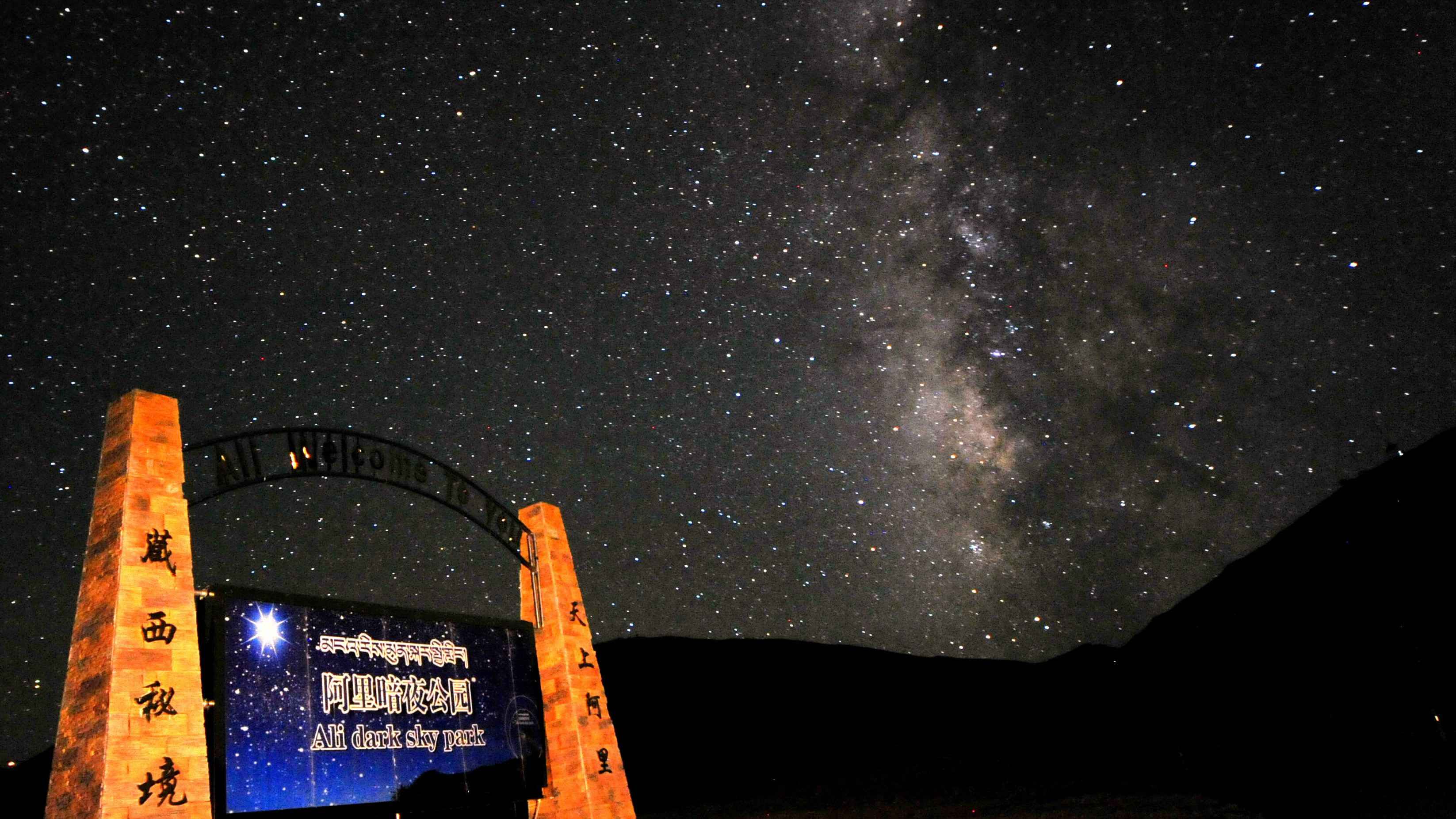
Tech & Sci
16:17, 10-Jan-2018
China's first dark sky reserve aims to curb light pollution
Alok Gupta

China is developing one of the world’s largest dark sky reserves to combat light pollution and create an ambient location for astronomical observation.
According to a research paper published in Science Advances, the amount of artificially lit up outdoor area grew worldwide by an annual average of 2.2 percent from 2012 to 2016, increasing light pollution.
The increase in artificial lighting has brightened the skies to the extent that nearly two-thirds of city populations are unable to see constellations and the Milky Way.
According to the study, areas where the Milky Way was completely obscured include the London to Leeds/Liverpool region of England and the areas surrounding Beijing, Hong Kong and Taiwan in China.
Last year, China Biodiversity Conservation and Green Development Foundation (CBCGDF) started a project to create a dark sky reserve in a bid to preserve the visibility of starry nights. The initiative is aimed at curbing light pollution while also raising awareness about it.
The reserve spreads over 2,500 square kilometers in area at Ngari, Tibet Autonomous Region, which borders India and Nepal.

A NASA image shows a brightly lit Italy. /NASA
A NASA image shows a brightly lit Italy. /NASA
“We are raising awareness with 20,000 residents from the area about controlling the use of artificial lighting and trying to avoid the extremely bright lights in the town,” Xiao Tongren, chief of the Dark and Starry Sky Committee of the CBCGDF told CGTN.
The organization has also collaborated with the local administration in Tibet to implement the dark sky reserve rules. Ren pointed out that their aim is to ensure there are no neon lights, light emitting diode (LED) screens, floodlights or horizontally focused lights within Ngari.
There are only 12 dark sky reserves that have been accredited by the International Dark-Sky Association. It includes Aoraki Mackenzie (New Zealand), Brecon Beacons National Park (Wales), Central Idaho (US), Exmoor National Park (England), Kerry (Ireland), Mont-Mégantic (Québec), Moore's Reserve (England), NamibRand Nature Reserve (Namibia), Pic du Midi (France), Rhön (Germany), Snowdonia National Park (Wales) and Westhavelland (Germany).
China’s dark sky reserve would be the first one in Asia. However, the International Dark-Sky Association has named Yeongyang Firefly Eco Park as a Silver-tier International Dark Sky Park, the first such designation in Asia.
Zhou Jinfeng, secretary general of the CBCGDF Party committee, pointed out that light pollution has a significant impact on migratory birds and wildlife. “Bright lights impact the visibility of nocturnal birds and disrupts their habitat and also migration pattern,” he said.
“Light pollution also has a major effect on human health like circadian rhythms too,” he added. Circadian rhythms are important in determining the sleeping and feeding patterns of all animals, including human beings.
Rapid urbanization in most of the developed and developing countries has led to increasing light pollution. China, despite massive growth of cities, has managed to contain its annual increase in the area lit artificially below 2.1 percent and its brightness below 1.9 percent.
“It’s surprising that China has been able to control light pollution to a large extent,” Christopher Kyba, one of the lead authors of the study on light pollution, told CGTN.
Top Image: The Dark Sky Park is located in the core areas of Ngari's Dark Sky Reserve. /Xiaohua Wang Photo

SITEMAP
Copyright © 2018 CGTN. Beijing ICP prepared NO.16065310-3
Copyright © 2018 CGTN. Beijing ICP prepared NO.16065310-3